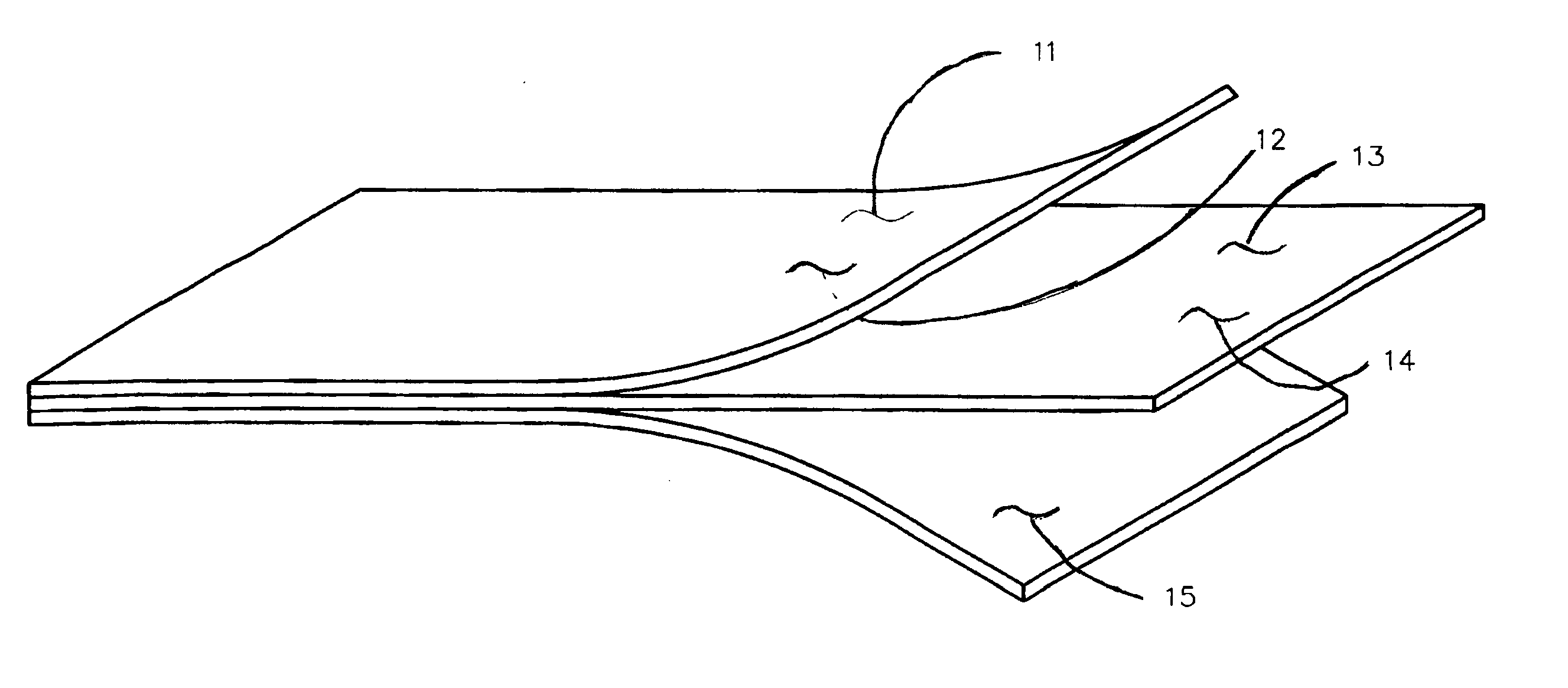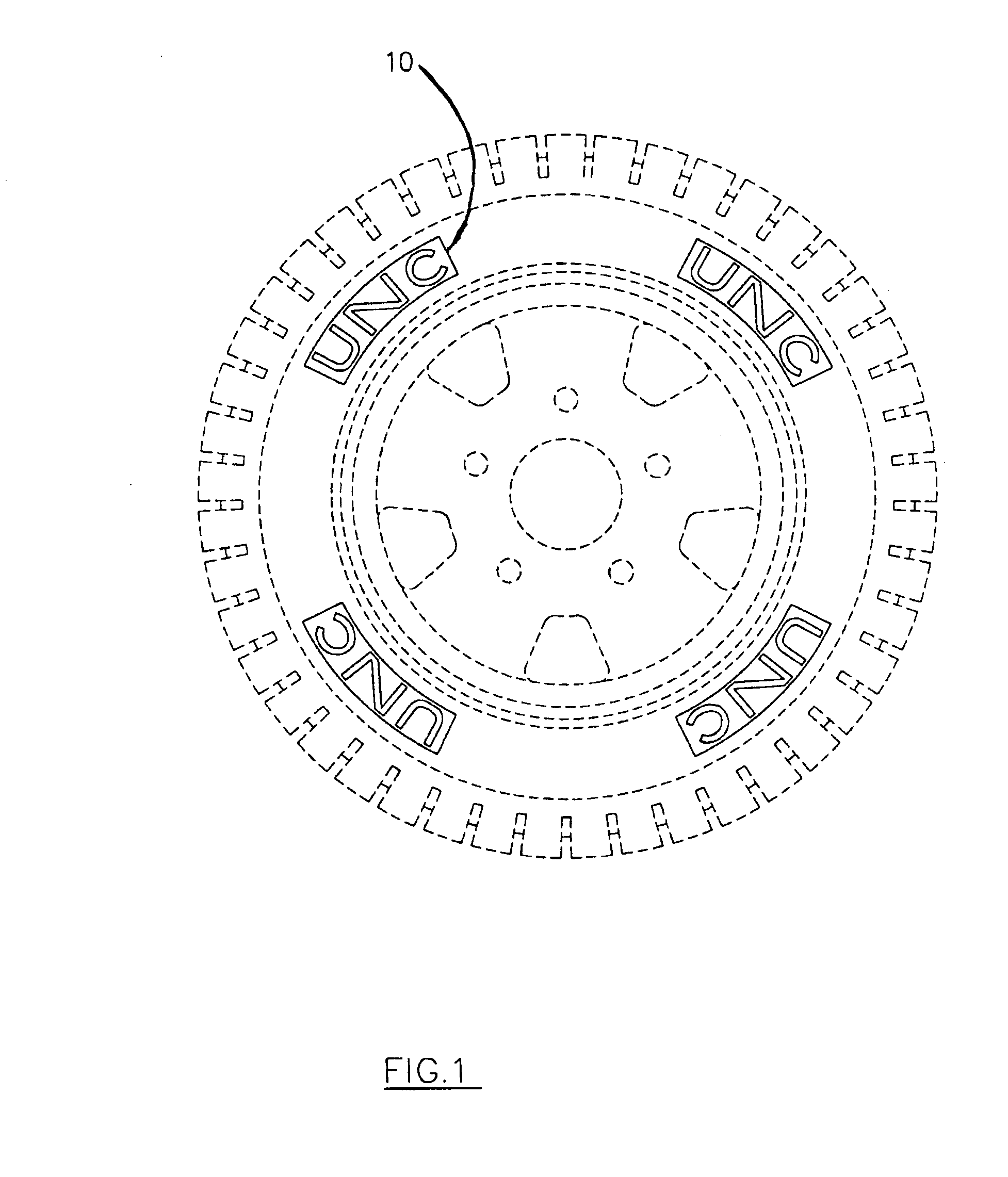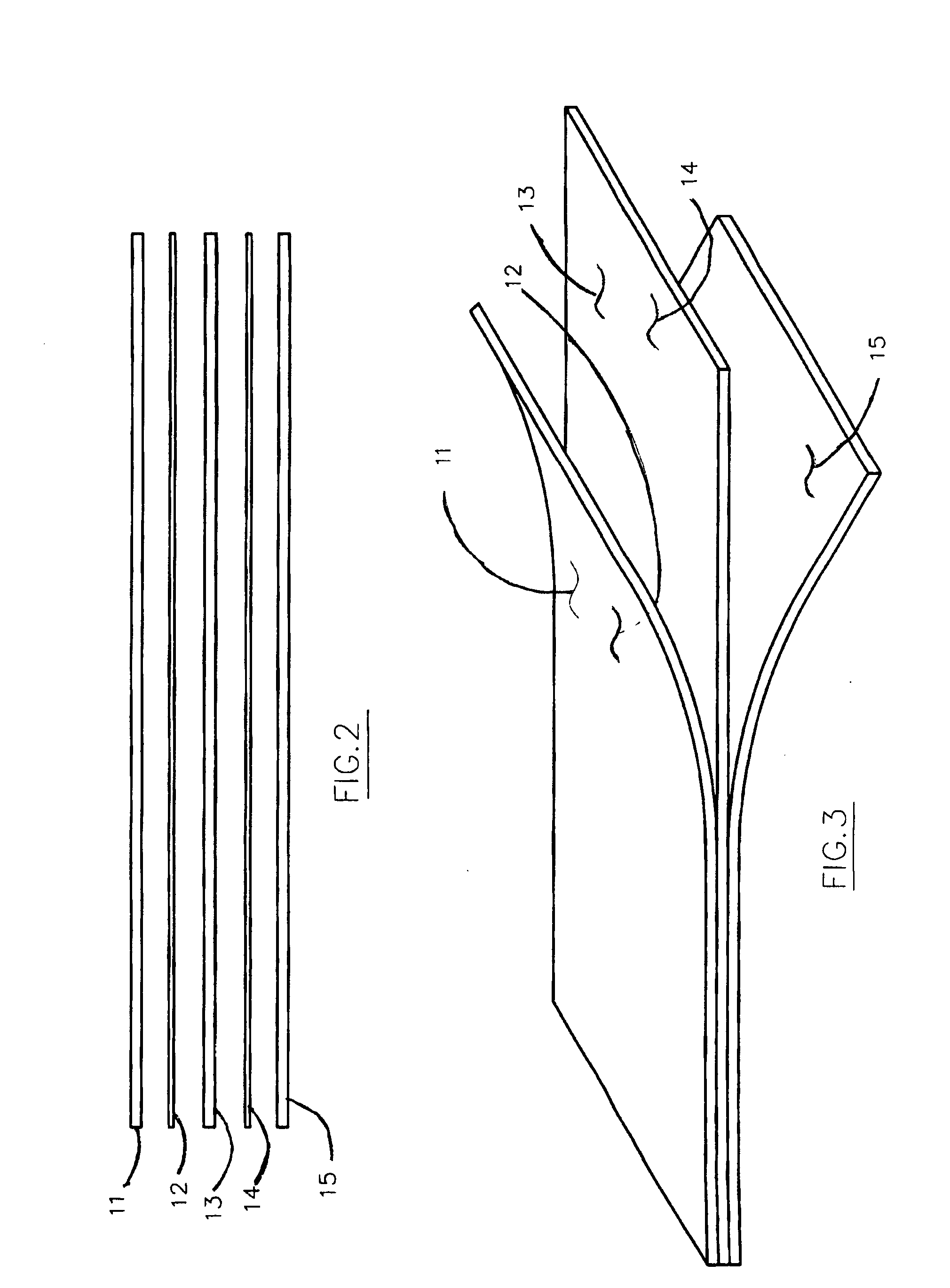Temporary Tatoo for Rubber Tires
- Summary
- Abstract
- Description
- Claims
- Application Information
AI Technical Summary
Benefits of technology
Problems solved by technology
Method used
Image
Examples
Embodiment Construction
[0028]Article 10 has multiple layers. Clear plastic laminate 11 is placed over a moisture transferable image 13 that is disposed on releasable backing 15. Article 10 may optionally have a separate adhesive layer 12 disposed between image 13 and laminate 10. Adhesive 12 may alternatively be interdispersed within the inks forming image 13 and may facilitate affixation of image 13 to a tire side wall without the need for providing an adhesive as a separate layer. Similarly, release material layer 14 may be present as a separate layer, or may be incorporated into the surface of backing 15.
[0029]In one preferred embodiment, backing 15 is starch paper coated with a gelatin. The gelatin provides a barrier between image 13 and backing 15 and facilitates the release. Preferably, backing 15 is 2-10 mil in thickness.
[0030]Plastic laminate 11 may be any acceptable plastic laminate as in known and used in the art. However, the laminate is preferably between about 1-4 mil in thickness.
[0031]Image...
PUM
 Login to View More
Login to View More Abstract
Description
Claims
Application Information
 Login to View More
Login to View More - R&D
- Intellectual Property
- Life Sciences
- Materials
- Tech Scout
- Unparalleled Data Quality
- Higher Quality Content
- 60% Fewer Hallucinations
Browse by: Latest US Patents, China's latest patents, Technical Efficacy Thesaurus, Application Domain, Technology Topic, Popular Technical Reports.
© 2025 PatSnap. All rights reserved.Legal|Privacy policy|Modern Slavery Act Transparency Statement|Sitemap|About US| Contact US: help@patsnap.com



